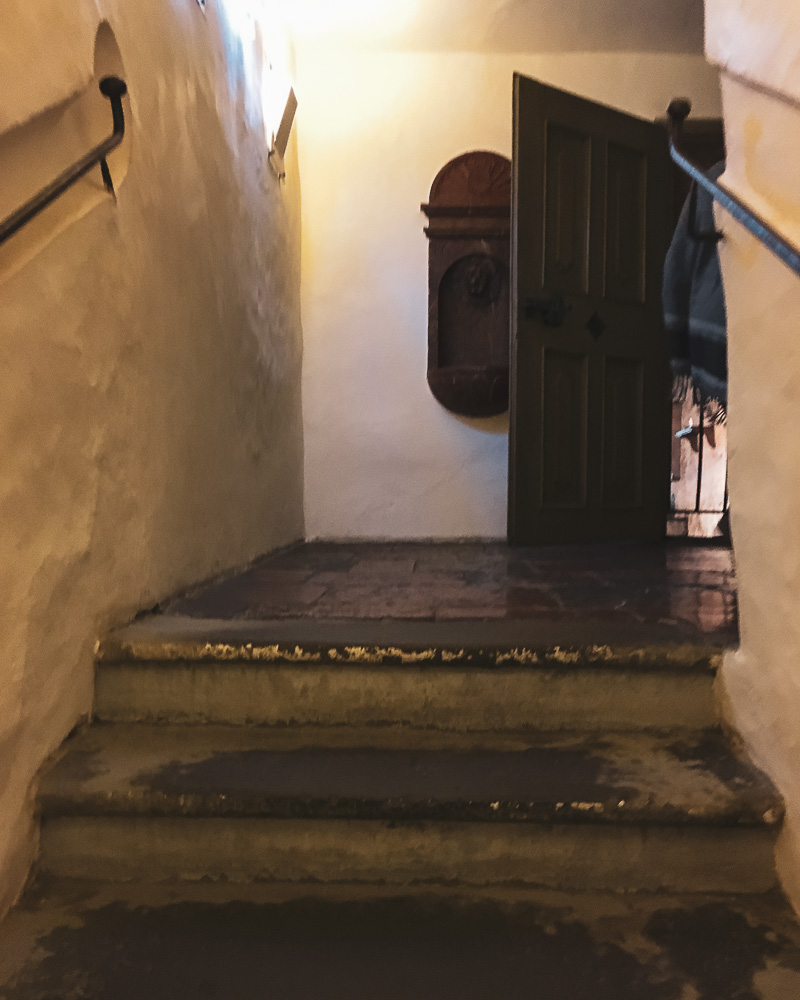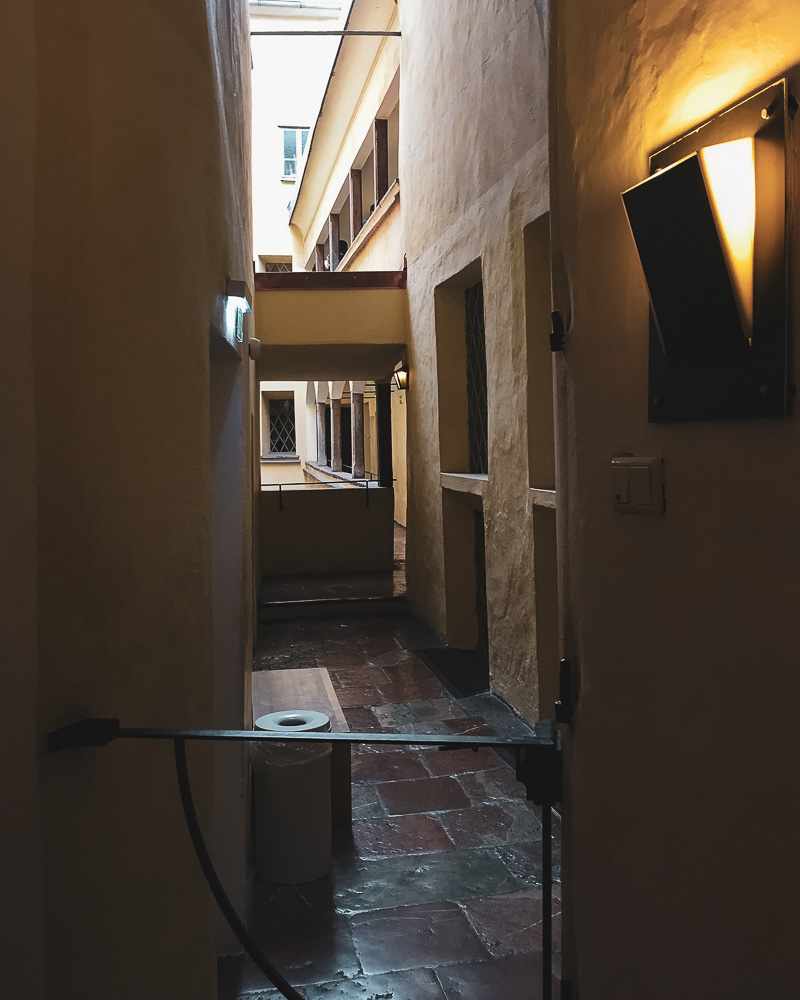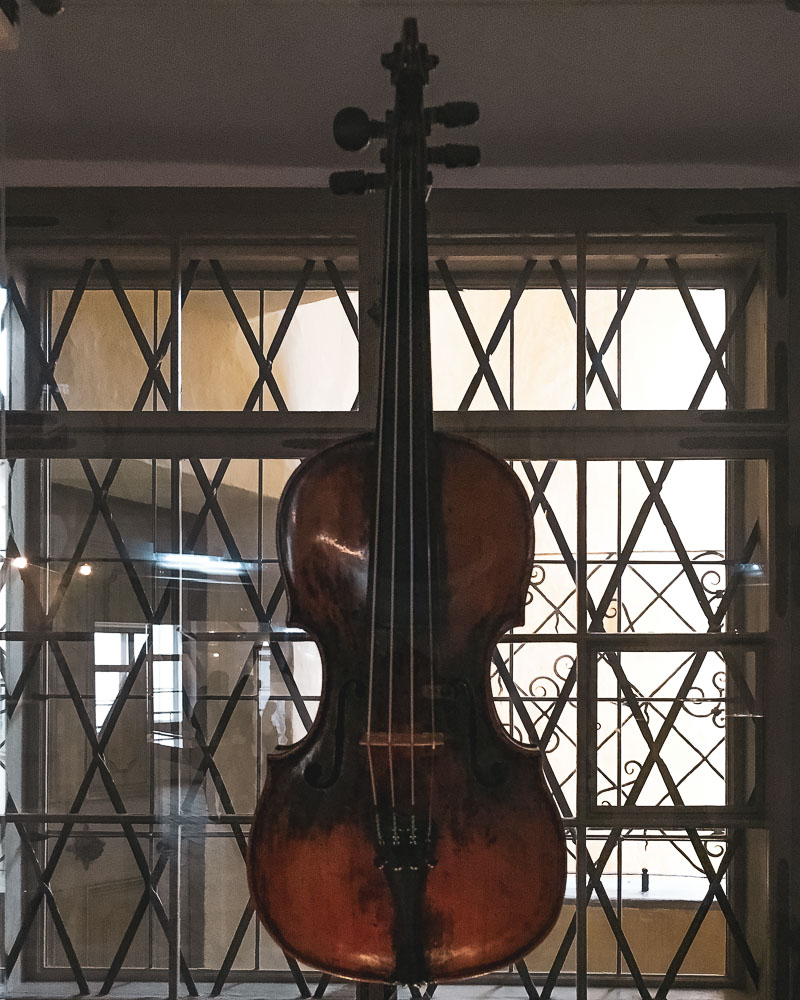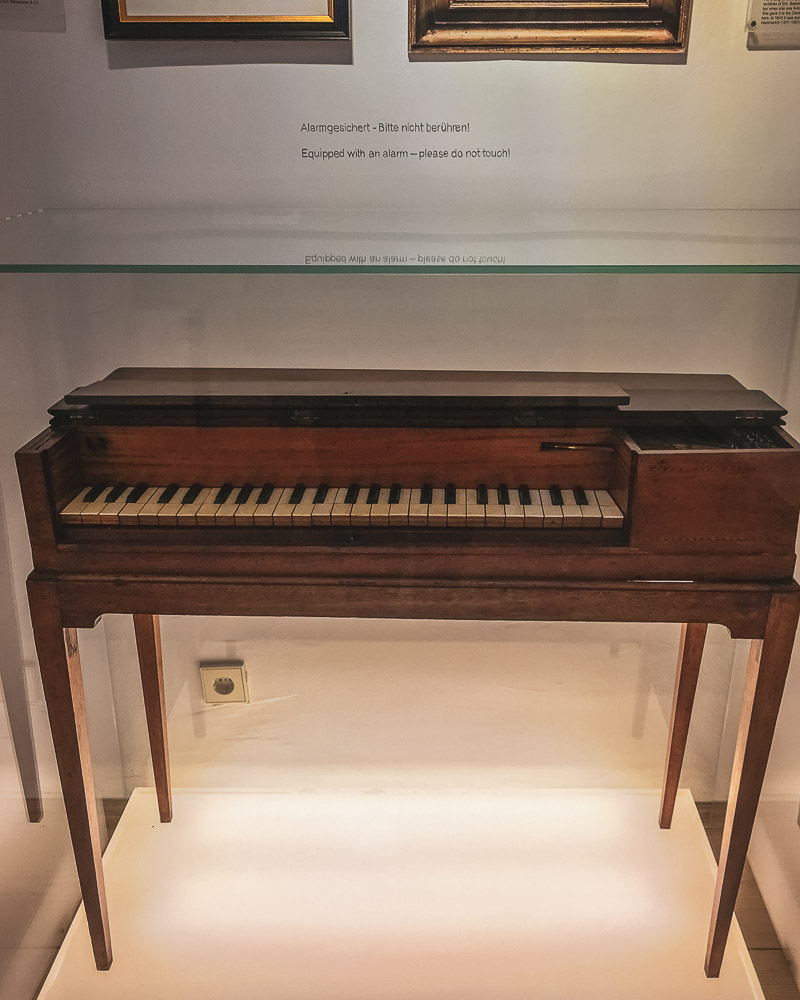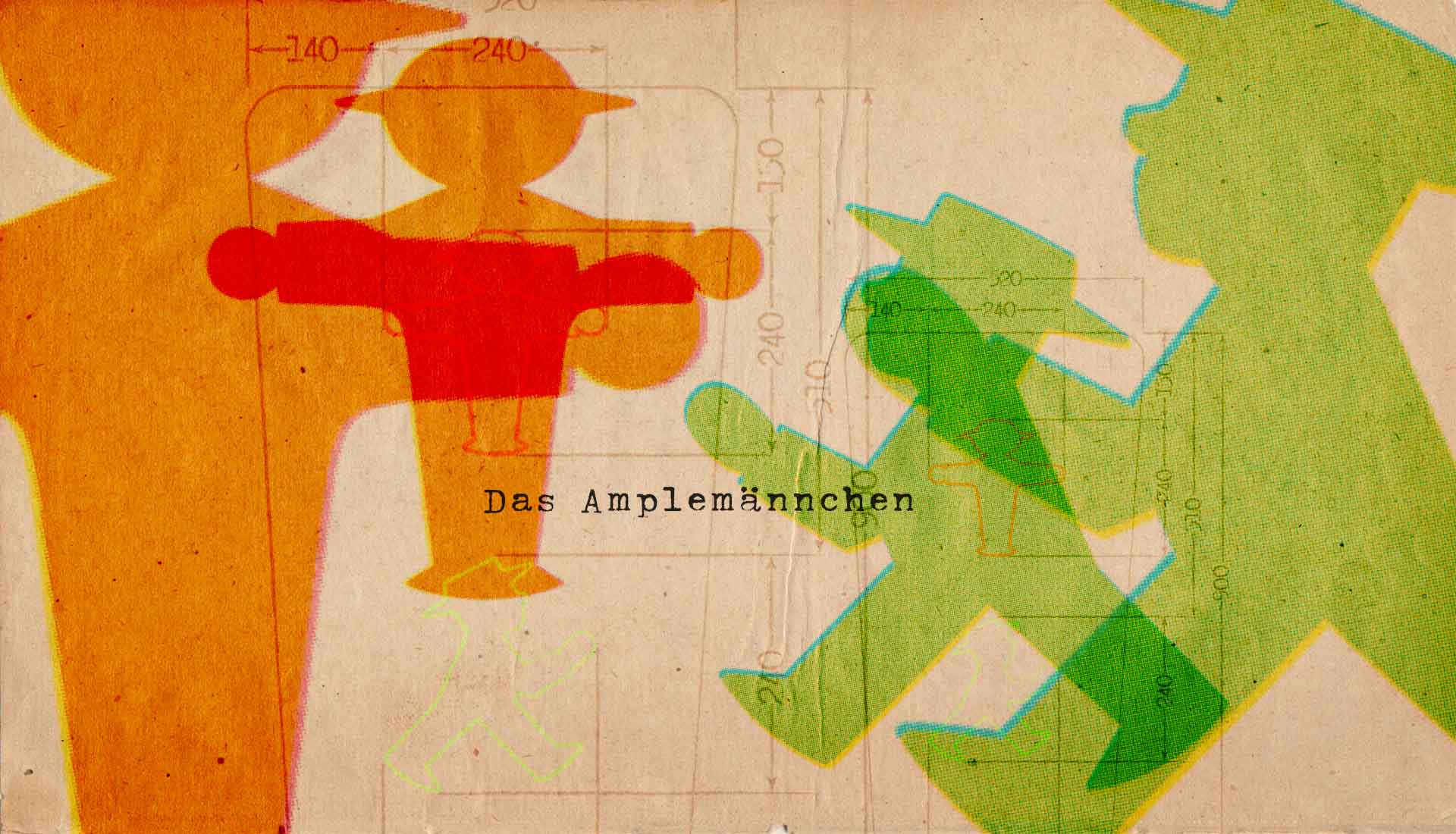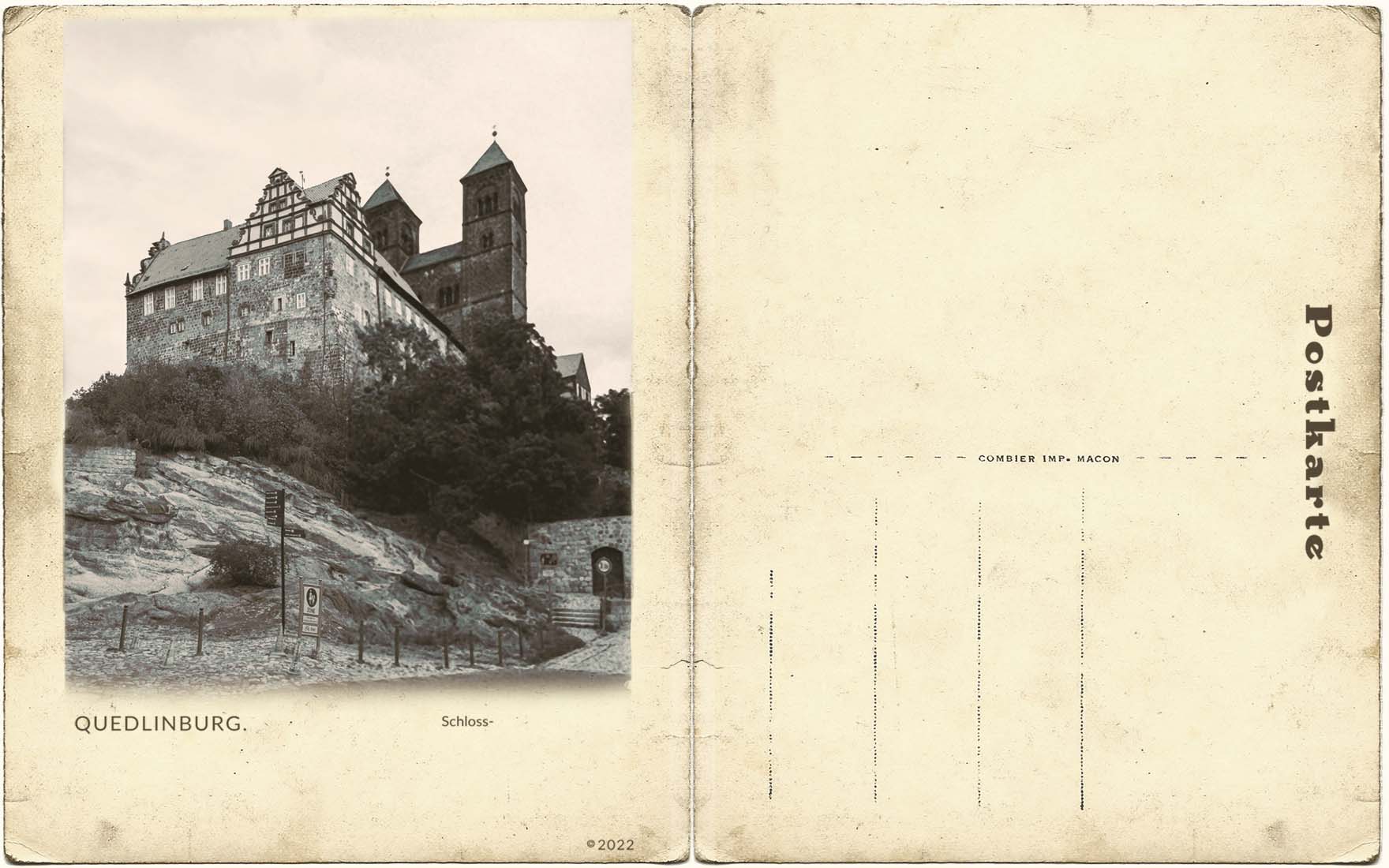ne site want to visit is Mozart's birthplace (or Mozarts Geburtshaus). The house was built in the 12th century on ground which had been part of the garden belonging to the Benedictine monks. Otto Keutzel, a merchant, is mentioned as the owner in 1408 while Chunrad Fröschmoser, the court apothecary, purchased the property in 1585. On the doorway, the coiled serpent in the lion's mouth, the symbol of Asclepius, still testifies to his ownership. In 1703, the house came into the ownership of the Hagenauer family who had arrived in Salzburg around 1670. Specifically they included Joseph Matin Hagenauer and Johann Laurenz Hagenauer who became Mozart's landlord.
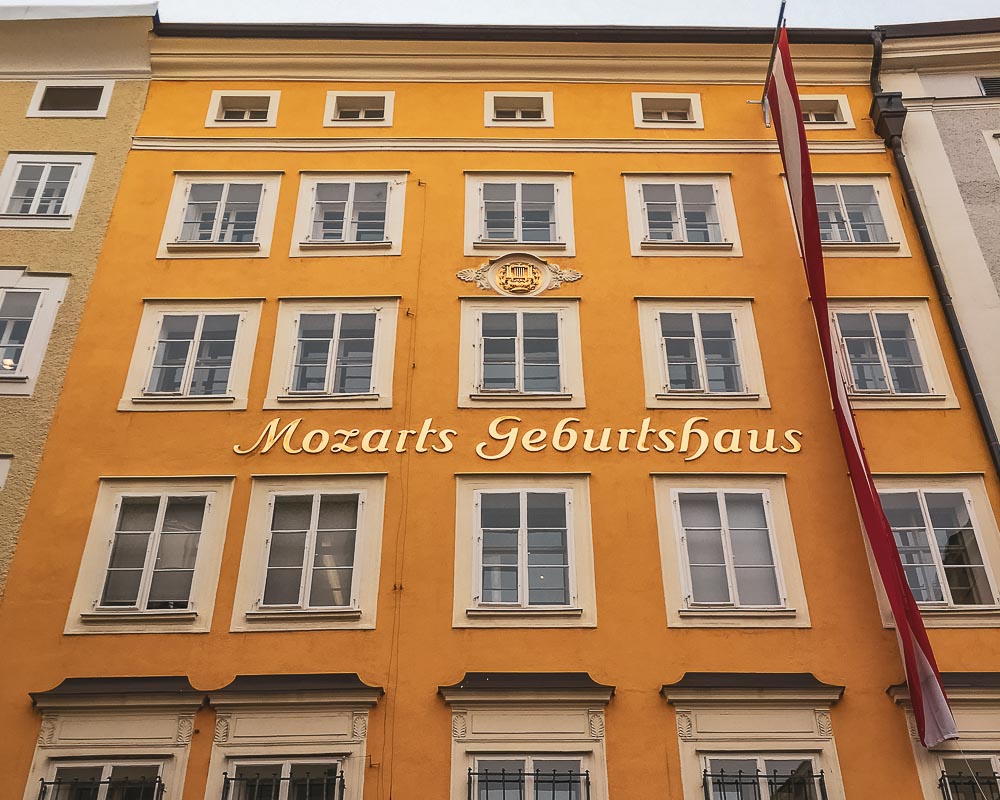
The Mozart family lived in this house for 26 years before moving to the Mozart residence on the other side of the river in 1773. Mozart’s father was a chamber musician and composer in the service of the prince-archbishop. Not long after Leopold married Anna Maria Pertl, they moved to this rented 130 square meter apartment on the third floor. The couple had seven children, only two of whom survived to adulthood. Mozart was born here on 27 January, 1756.
The life of the Mozart’s was typical of that of a middle-class family in Salzburg. The atmosphere in the house at Getreidegasse No. 9 was probably harmonious and cheerful. There was much music-making and many acquaintances and friends would come to visit. The mother took care of the household with the help of a maid, while Leopold was out of the house doing his service at the archiepiscopal court or teaching. At home he composed, rehearsed with musician colleagues, or gave private lessons to his music students.
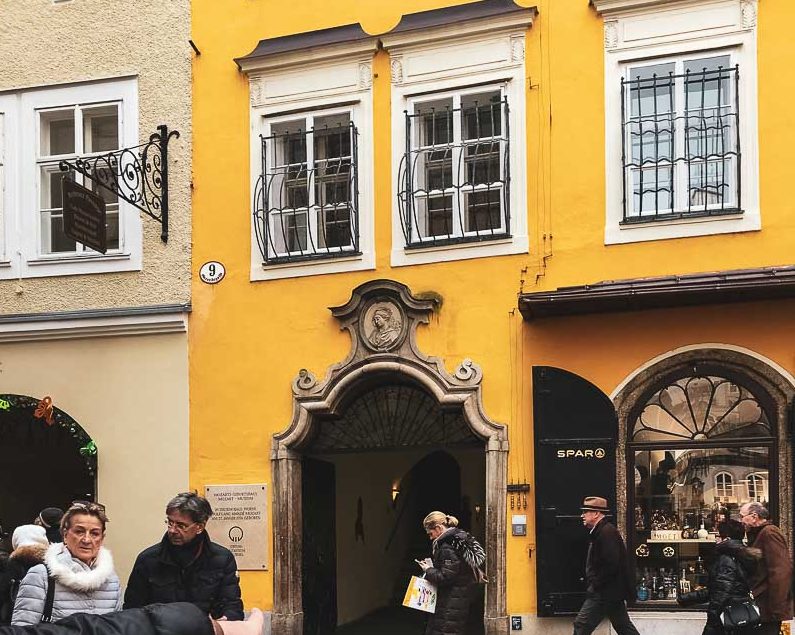
The Mozart Family enjoyed a close friendship with the owners of the house, the Hagenauer family. On the ground floor, Johann Hagenauer ran a store selling luxury goods such as herbs, tea, coffee and tobacco. The successful businessman always supported the many travels of the Mozart family and, thanks to his frequent correspondence with father, we are well informed about Mozart’s early years as a young boy.
Only a few changes have been made to the façade of the house since Mozart’s time. One interesting detail remains – beside the entrance doorway are a series of three pulls. Pulling one would make a bell ring at the window of that floor – an old doorbell system.
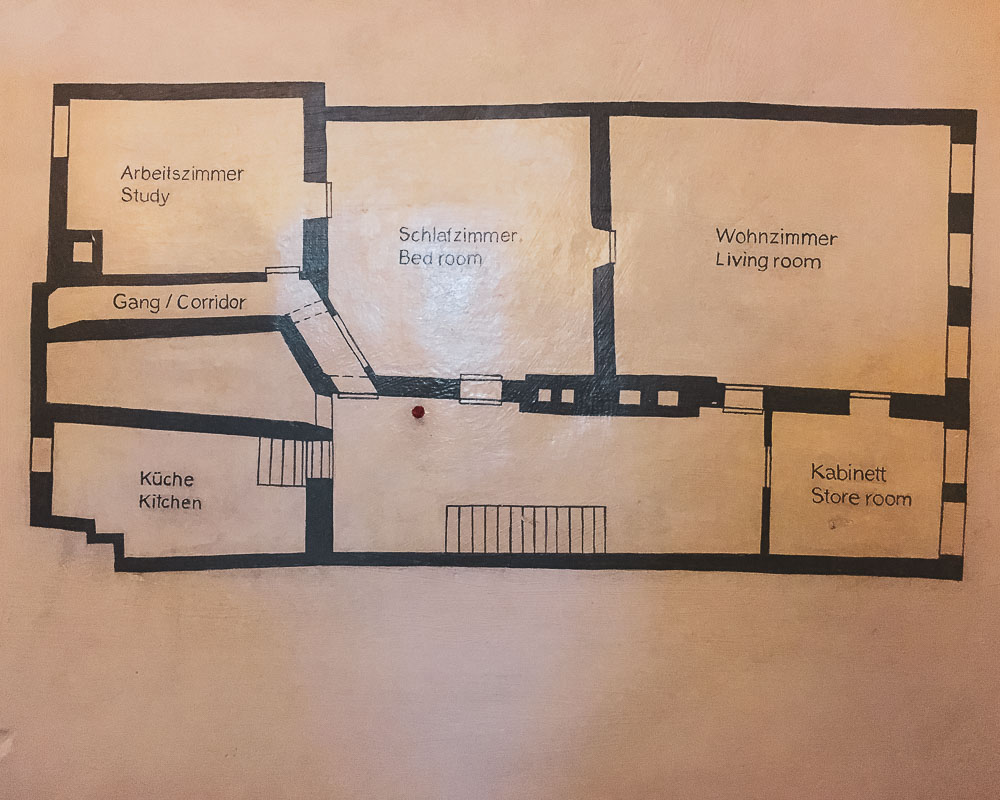
During the 18th century, kitchens in middle-class homes were not part of the apartment. They were separate from the living area because of all the smoke and the danger of fire. The focal point was the stone stove where food was cooked over an open fire and it was usual for several families to share one kitchen.
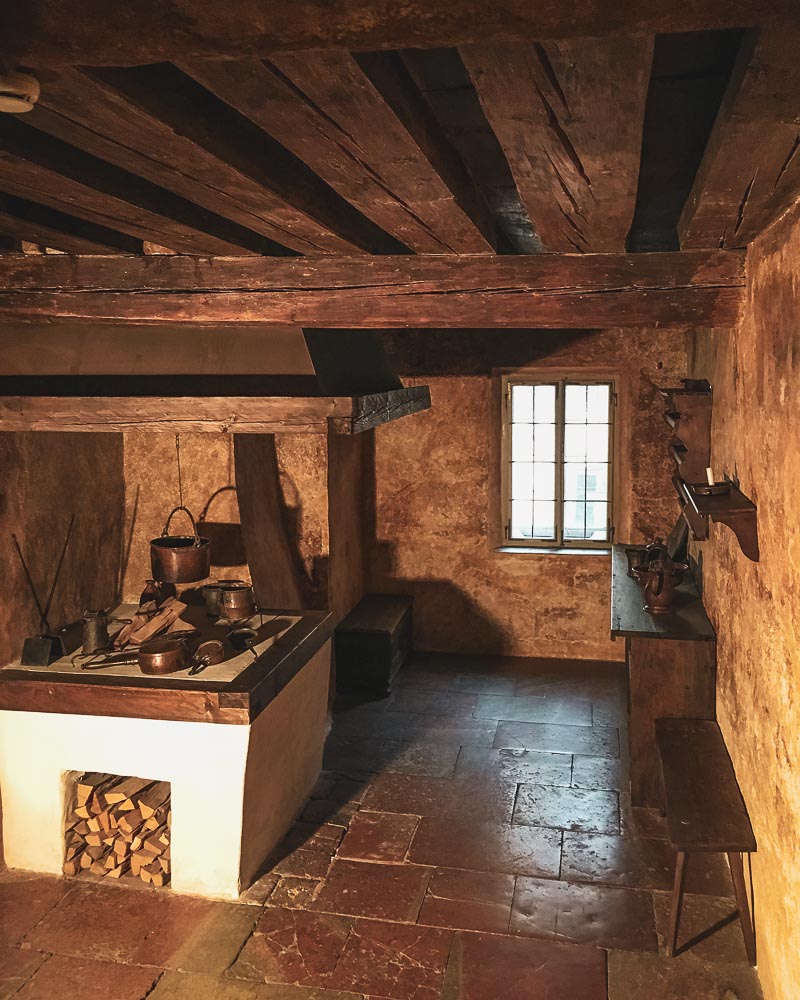
The living room would have been the largest and brightest room in the apartment and served as a sitting room and where the family ate and played music. Unfortunately, no items of furniture from the Mozart Family have been preserved.
The green tiled oven in the corner of the room is not from Mozart’s time but there would have been something similar in the same spot. Rather cleverly, the oven door is opened and filled with wood from behind – there is an opening in the corridor behind it. This prevented dirt and soot from entering the living area.
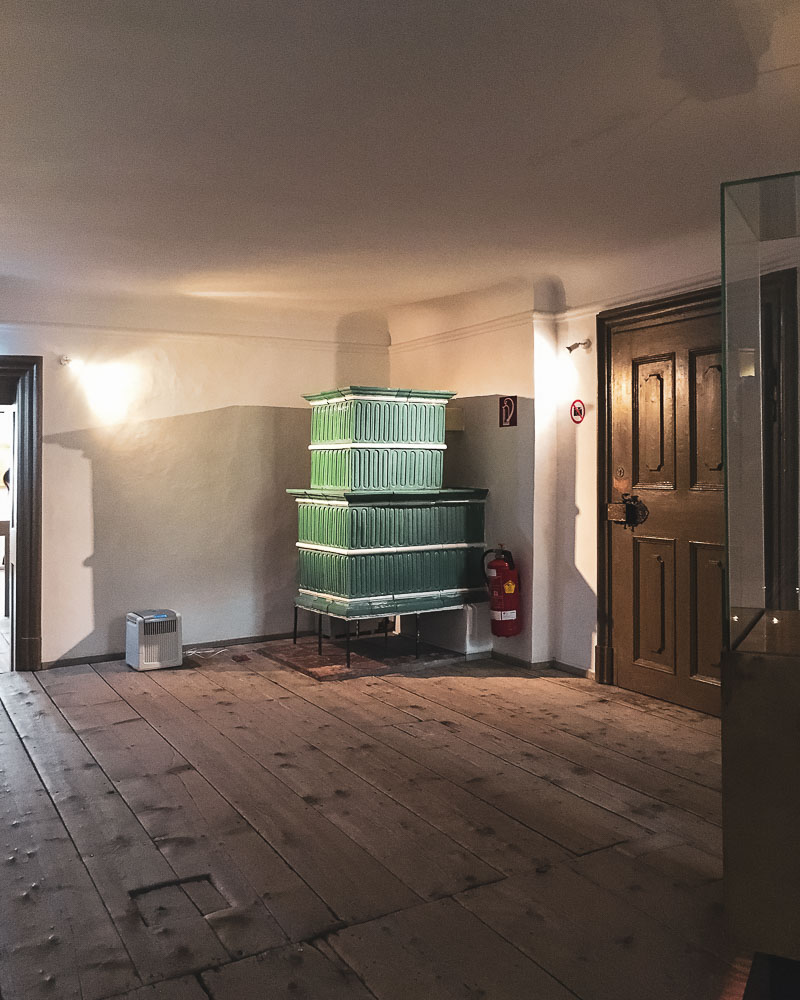
The family bedroom was probably also the room where the children were born. Nannerl Mozart was born during the night of 30/31 July 1751 and Wolfgang was born on 27 January 1756 at 8 o’clock at night, the last of seven children.
Looking at the large family tree of the Mozart family, I can see how high the infant mortality was during the 18th century. Leopold and Anna Maria Mozart had seven children but only two survived to adulthood. Wolfgang and his wife also had only two sons who survived until adulthood but they died unmarried and childless. When Mozart’s sister’s great granddaughter died in 1919, the line was extinguished.
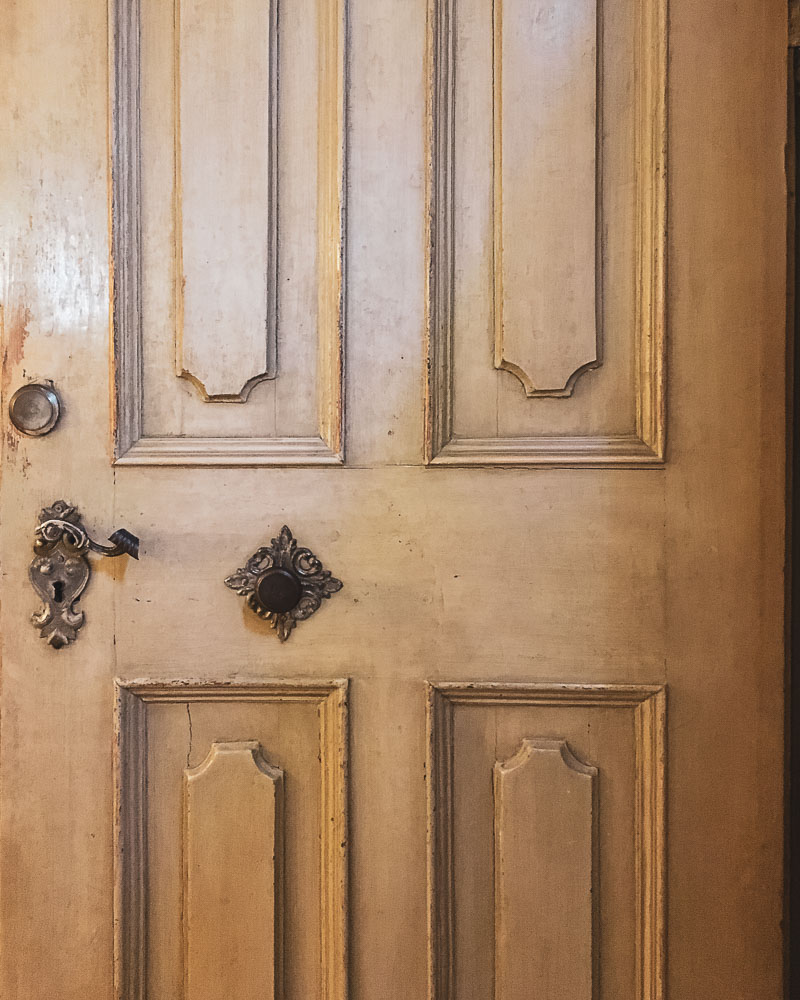
There is some insight into the married life of Mozart and his wife when they lived in Vienna. In april 1781, Mozart wrote to his father:
I can assure you that this is a wonderful place, and for my profession the best place in the world.
When Mozart arrived in Vienna in 1781, the city had a population of about 200,000. Mozart hoped to receive commissions from the nobility and higher middleclass, and, in particular, he hoped for possibilities of musical development.
Mozart’s greatest wish – to compose operas – could not be fulfilled in Salzburg. Besides his work as a composer, Mozart also earned a living by teaching and by making occasional concert appearances as a pianist. And in 1787, he also took on the post of a chamber musician at the imperial court. Mozart did an enormous amount of work; he had time to compose during the night or in the early morning and usually managed with only five hours sleep. Although he earned a lot of money, he also had huge debts.
Mozart died in his 36th year on 5 December, 1791 after a long illness and was buried the next day at a cemetery outside the gates of Vienna. Contrary to the legend, he did not have a funeral of a pauper.
Leaving Mozart’s life behind, I descend the stairs and return to modernity.




